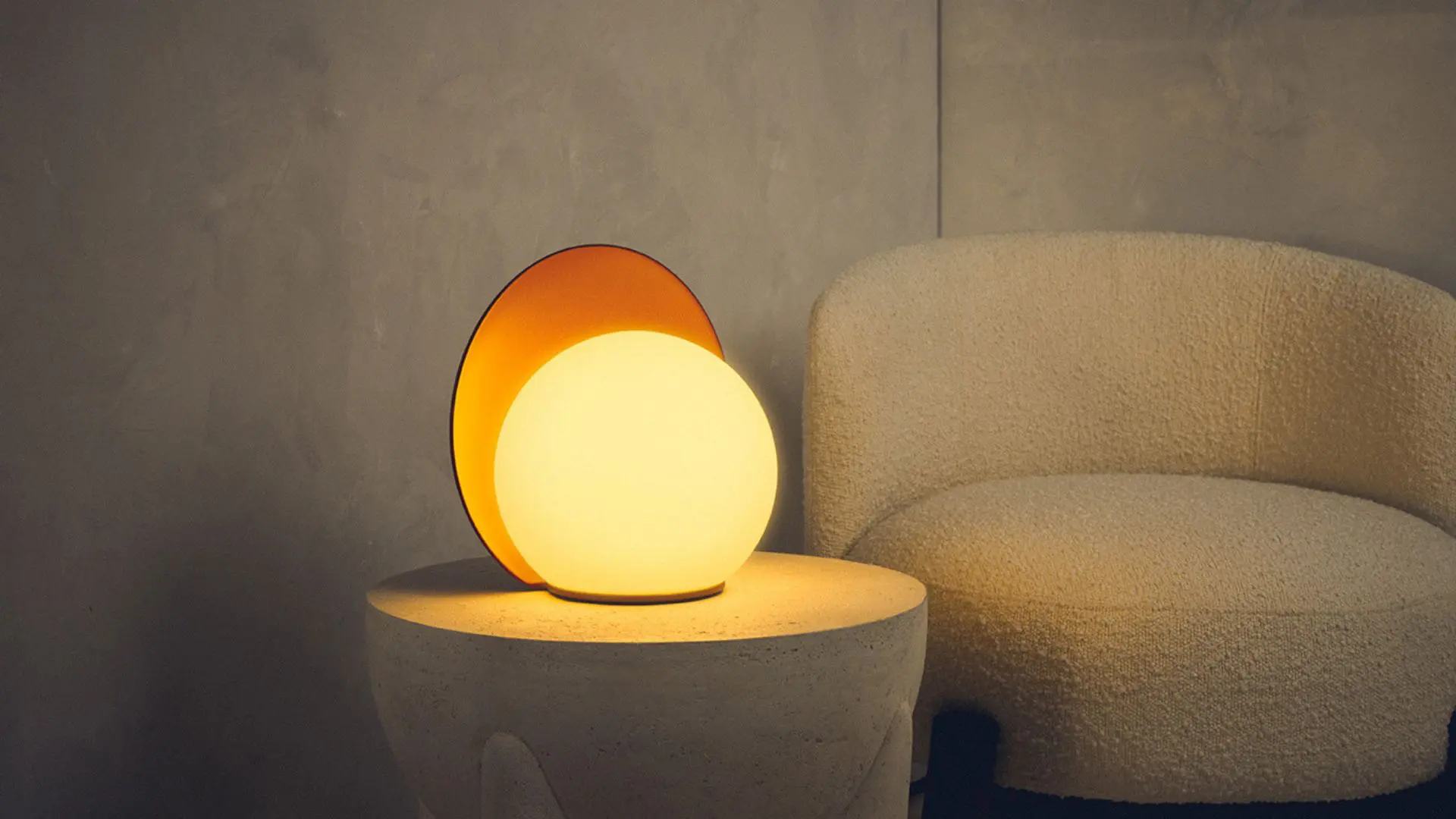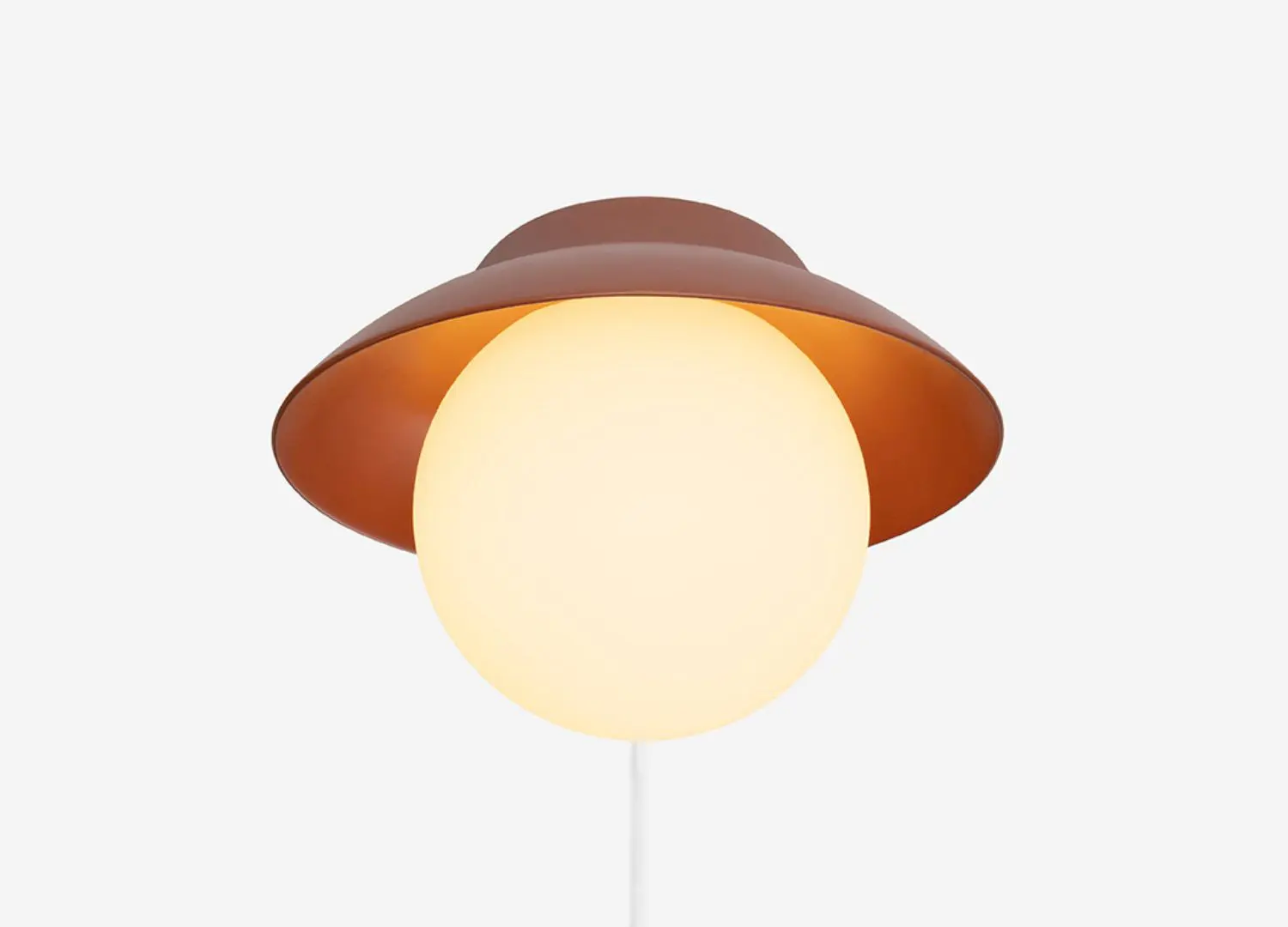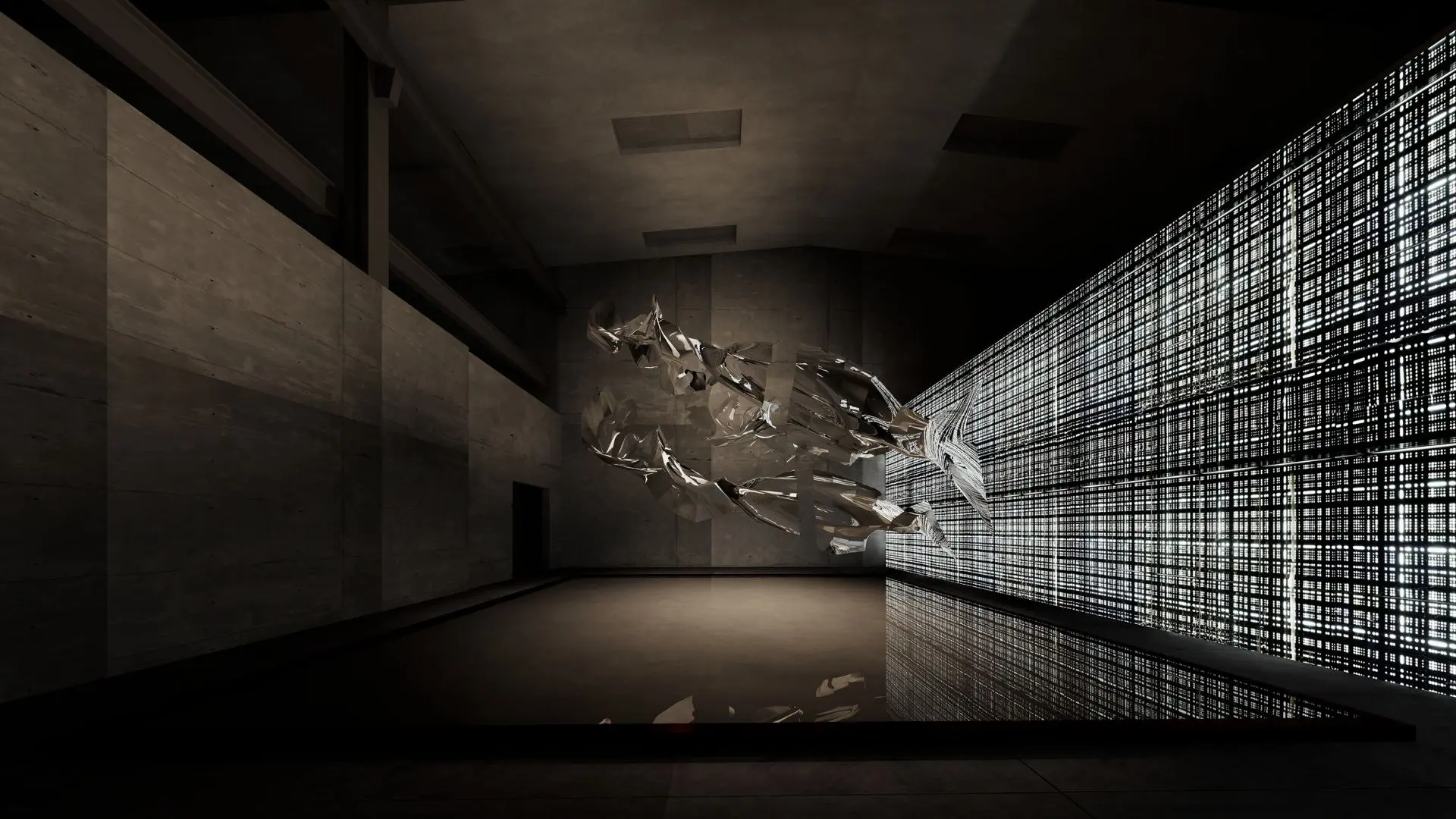Noah, a lighting collection inspired by a father’s love for his son
The complete, spherical design naturally mirrors the silhouette of a pregnant abdomen, embodying the essence of motherhood. The interplay between the diffuser and shade captures the imagery of two spirits dwelling within one entity, symbolizing the inception of new life.

Designed by Filippo Mambretti, the Noah collection embodies the concept that life and light are harbingers of hope, meant to bathe the user in a glow that is comforting, warm, and protective. This collection serves as the perfect accent for spaces that favor organic minimalism.
The journey of a designer is marked by a continuous evolution of personal and professional growth, where creativity transcends mere aesthetic appeal to embody deeper meanings and experiences. The narrative we’ve explored delves into the complex process behind the creation of the Noah lamp collection, a project that beautifully illustrates how profound life experiences, such as the anticipation of fatherhood, can be distilled into the design of everyday objects.

Through a collaboration with GANTRI, a brand known for its innovative use of 3D printing technology in lighting design, Filippo Mambretti embarked on a journey that challenged conventional design norms, opting for an approach more akin to sculpture than traditional product design.
This process led to the creation of pieces that not only captivate the audience with their form and function but also carry an emotional depth and narrative, seamlessly blending the realms of design, technology, and human experience.
Who is Filippo Mambretti? What experiences and education have shaped your journey to this point?
Filippo Mambretti:
“I believe that embarking on a serious and intensive therapeutic journey with a specialist who can guide and assist me in exploring the depths of my inner self might eventually equip me with the readiness to tackle this question. But, moving beyond humor, I’m someone who revels in the experience of getting lost, only to unexpectedly find myself at the least anticipated moments. From my childhood, my aspirations have undergone numerous transformations—from dreaming of becoming an archaeologist, to a theoretical physicist, to a musician.

However, when faced with the realities of life, I’ve engaged in various jobs, from gardening to managing a newsstand, to working as a bartender, all in an effort to fund my education at the Polytechnic University of Milan, aiming for graduation. Concurrently, with the goal of accruing project experience and insight, I navigated through diverse internships and traineeships in architecture and design studios. These years were marked by complexity, requiring me to forgo aspects of my personal life and sacrifice sleep, all driven by the ambition to chase a dream inspired by Bruno Munari during my time at the Art High School, and perhaps to prove something undefined to someone unknown.
Currently, I don’t view myself as either content or accomplished, despite having successfully launched my design studio a decade ago, meeting numerous project milestones, and also obtaining a degree in pedagogy for professional education, with a significant portion of my time devoted to teaching and curriculum development. As suggested by what I’ve shared thus far, I have a certain aversion to “full stops” because they invariably lead to the same outcome—a conclusion.”

What were the driving forces behind bringing the Noah collection into existence?
Filippo Mambretti:
“To elevate the feeling of becoming a father into the crafting of an artifact. “Arte factus” in Latin means made with ingenuity. By channeling this profound new emotion into the initiation of a novel project, I’ve gained a deeper insight into the impending transformation in my life and everyday existence, simultaneously honoring my son Noah, and his mother. It was this motivation that led to the creation of the Noah lamp collection.”
Can you delve into the genesis of your collaboration with Gantri for this project and outline the objectives set forth by the company?
Filippo Mambretti:
“My partnership with GANTRI was firmly established and flourishing for several years before we embarked on creating the Noah collection. GANTRI reached out to me for the first time in late 2017. At that time, Ian, who is now the CEO of GANTRI, was just a young man. His humility and willingness to embark on the ambitious endeavor of launching a lighting brand characterized by exclusively using additive 3D printing technology made a significant impression on me.

Despite his youth, he was a visionary with clarity and a strategic approach. His enthusiasm, courtesy, respect, and practicality, coupled with an open-minded and inclusive perspective, were compelling. How could one not be captivated by such a character?
Thus, within weeks of my initial drafts and designs for DULCE and AURA, the first two models I created for GANTRI, we progressed to photographing the two fully engineered and flawlessly finished lamps in an oceanfront villa near San Francisco. This introduced me to project schedules and processes I had never experienced before… And frankly, have not encountered since. Years have passed, yet my collaboration with GANTRI is as vibrant and dynamic as ever.
Meanwhile, the brand has soared, and being a part of this remarkable team from the outset is a privilege. GANTRI’s objectives are straightforward: to captivate users with lamps characterized by a pursuit of timeless design that is both harmonious and sophisticated, balanced yet distinct and recognizable. It’s an exhilarating challenge for any designer.”

What factors, whether emotional or functional, do you think contribute to its diversity over similar products?
Filippo Mambretti:
“Honestly, the product wasn’t designed with the intent to “please” or to be instantly recognizable. My creative approach leaned more towards sculptural than the typical design processes associated with product or lighting design. I delved into developing shapes and curves that echoed the pregnancy cycle and the transformation of female forms throughout this period of human body evolution.
I drew more inspiration from studying the shapes that define the Venus of Willendorf and other prehistoric representations of the Mother Goddess, rather than from conventional design cues, stylistic influences, or aesthetic trends. Remarkably, the product has been well-received by the public, garnering positive reactions and feedback from users.”

In addressing the Color, Material, and Finish (CMF) aspect, what strategy or methodology did you employ?
Filippo Mambretti:
“GANTRI provides designers with the option to select up to three colors to precisely tailor the design of their lamps. Thus, I chose hues that symbolize three significant phases in the life of an idealized human being, represented by the following shades:
- Stone: Defined in GANTRI’s color palette, it’s a gentle pink that, to me, perfectly represents the concept of birth and growth. This color is undefined, offering endless possibilities for chromatic variation.
- Sedona: Resembling terra di Siena but with a more enveloping quality, this shade evokes the warmth of self-awareness and the fiery passion of youth that evolves into mature, informed longing.
- Carbon: A dark, yet not somber, color. It aims to gracefully and knowingly signify the end of life’s journey without a sense of tragedy.
The brand’s signature soft finish complements these color choices.”

Considering the lighting market, what are the key principles of a lighting project that have the potential to garner positive resonance in the market?
Filippo Mambretti:
“The decorative lighting sector is crowded with various offerings, imitations, and numerous brands. Technological advancements play a significant role in providing designers the opportunity to explore innovative shapes, light effects, shadows, and reflections using new technical capabilities. Understanding what will resonate with the market, and identifying which market segment to target, poses a significant challenge, bordering on the impossible.
The influence of a brand’s reputation, its market credibility, and its visibility significantly impact the success of a new product, both in terms of sales and media coverage. This principle is a well-established fact that is critically important across both the design and fashion industries, influencing their related economic and marketing strategies.

However, I believe that a visionary, meticulously planned marketing strategy, executed with expertise and discipline rather than haphazardly, can lay the groundwork for the rise of new brands like GANTRI, poised to make their mark.”








